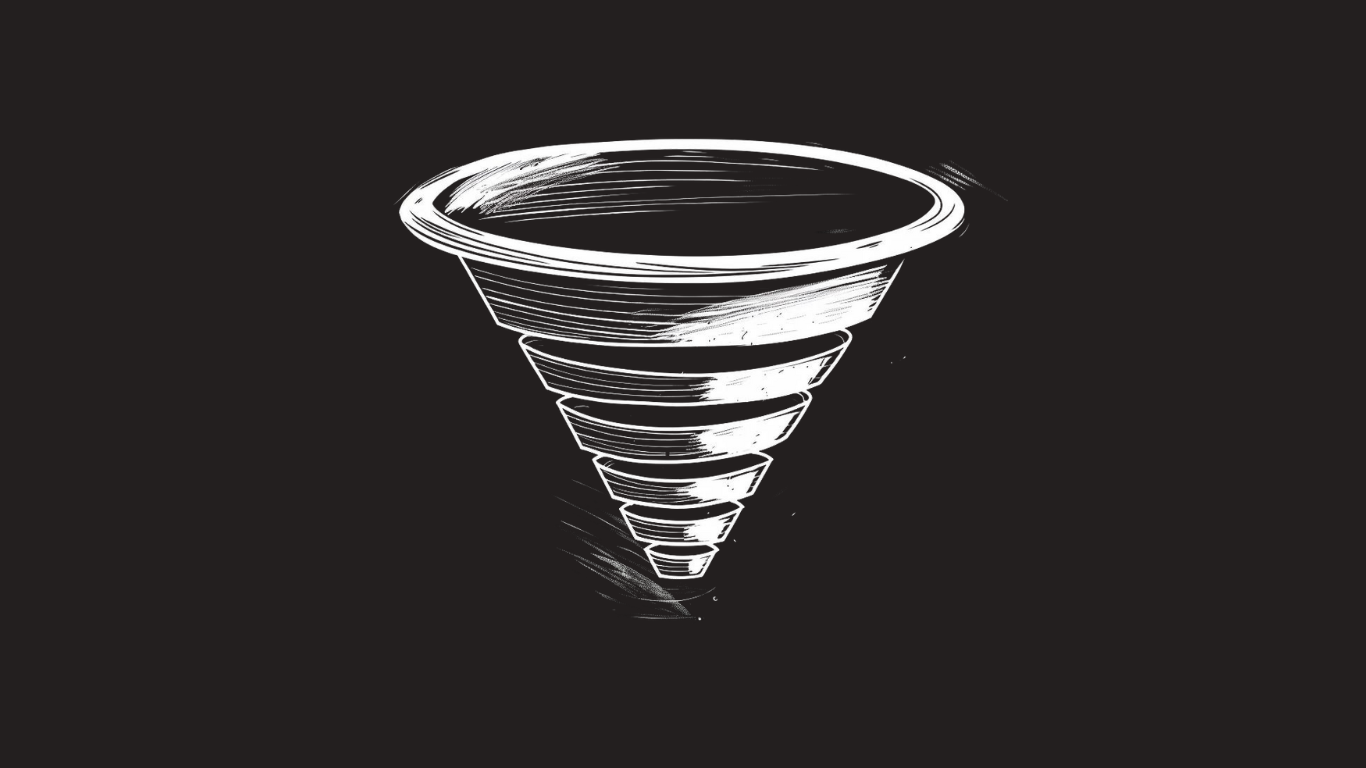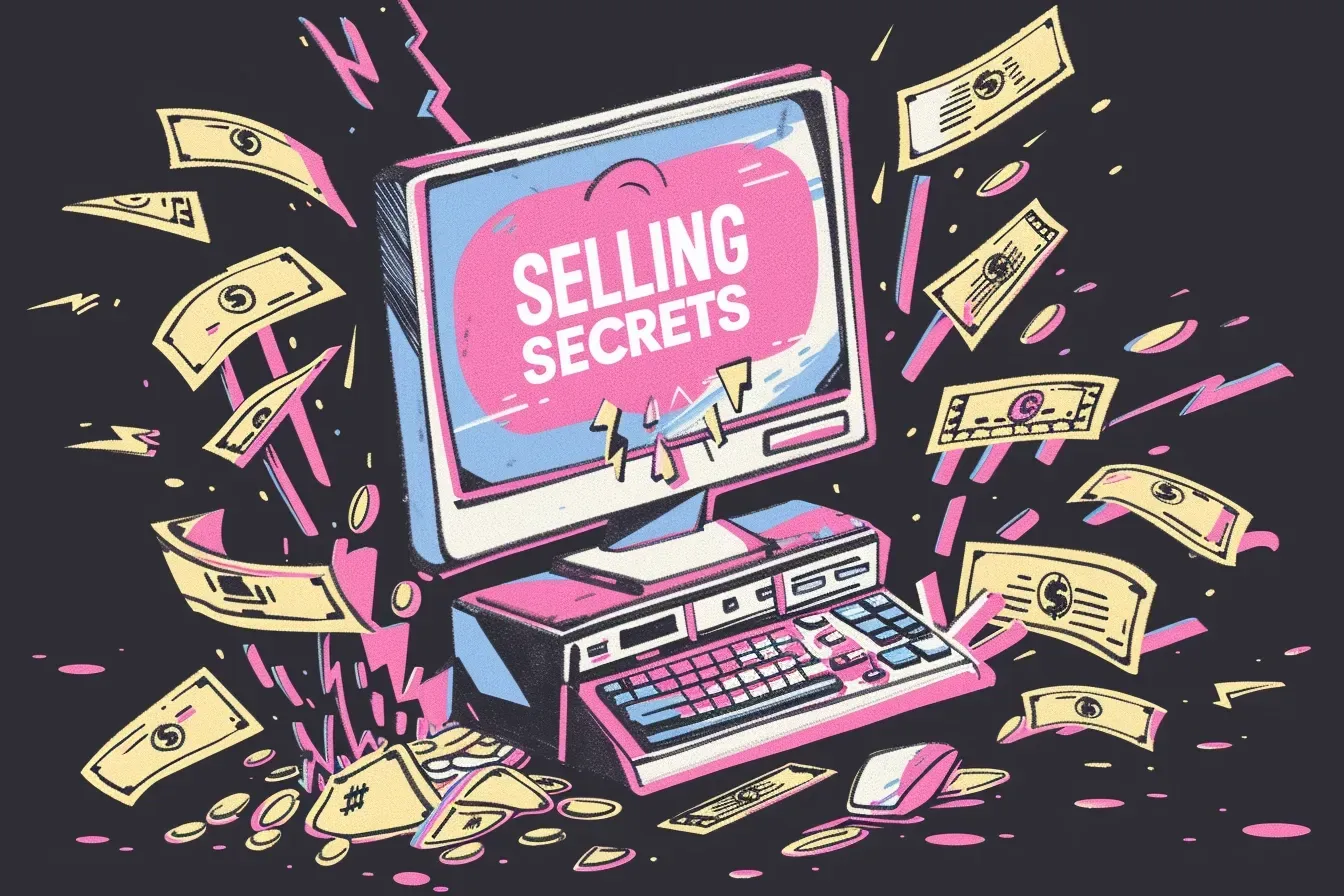The Ultimate Guide to Building a Sales Funnel That Converts Leads to Customers
The Ultimate Guide to Building a Sales Funnel That Converts Leads to Customers

"Where do I even start with making money online?"
Most entrepreneurs struggle from overwhelm when trying to launch and grow an online business. On the surface, there seems to be so many moving parts.
However, in this guide you will discover a step by step blueprint for generating leads and turning those leads into loyal customers.
You will learn what a sales funnel is and how to build one. You will use it to sell online courses, coaching, services, or anything you want to make money from through your personal brand.
This is the exact process I have used to sell courses online, grow multiple Jiu-Jitsu & MMA gyms, and grow a multi-six figure digital marketing agency in less than 10 months.
So let's begin by understanding what a sales funnel actually is.
Imagine a funnel, wide at the top and narrow at the bottom. This is a visual representation of the journey your potential customers take from first discovering your brand to making a purchase with you.
- Awareness (top of the funnel): This is when people first learn about your business, usually through advertising, social media, or word-of-mouth.
- Interest: Once people are aware of who you are and what you offer, they might want to learn more. They visit your website, read your content, join your newsletter, and consider if your products or services could help them.
- Decision: At this stage, potential customers are weighing their options. They might compare your offerings to your competitors or read reviews/testimonials. This is a great time to offer them something of value, like a free lead magnet, trial or a discount code.
- Action (bottom of the funnel): Finally, the potential customer decides to take the desired action, which is usually making a purchase (buying your course, coaching program, or signing up for your service).
The goal of a sales funnel is to guide potential customers through a journey. It gives them the info and value they need to eventually make a purchase.
Understanding this process will let you optimize each stage of your funnel. This will maximize conversions and grow your online business.
Here are the steps to get started building your own high-converting sales funnel.
Step 1: Attracting Qualified Leads
You want to start by identifying who your ideal customer is, aka your customer avatar:
Who are you trying to attract?
For example, if you are a fitness coach, are you trying to attract women who want to lose weight? Or youth athletes who want to prepare for competition? Or bodybuilders?
You want to get specific so that you are seen as the authority in your specific niche. You can go broad eventually, but it's much easier to start with a narrow target audience and build out from there.
You want someone to look at your content and say "This is for me".
Step 2: Once you know who your target audience is, you want to create a compelling lead magnet.
A lead magnet is something that you give away for free or at a low price point (I recommend under $50) in exchange for a persons name, email address, phone number, etc... This is how you generate leads and build up your email list.
Your lead magnet could be an ebook, e-mail course, a video workshop that you do live or pre-recorded. Don't overcomplicate it, just make sure it's valuable and naturally leads to your paid product or services.
The key to making this work is to make sure your free or low cost lead magnets are extremely valuable.
Do not be afraid to give away too much. You want to over deliver here.
Often times people are afraid if they give away too much upfront, they won't be able to sell their higher priced courses, coaching programs, products, etc... This just isn't true, it's the exact opposite actually.
If people see how much value you give upfront for free, they will think to themselves, "wow if this is what I get for free, their paid stuff must 10X more valuable."
Remember, your lead magnets are often the first impression your audience has with your offers & content.
Step 3: Create a landing page for your lead magnet or low priced offer.
It's important that your landing page is optimized for lead generation.
The basic elements of a high converting landing page are:
- Hook/Headline: Start with a clear, compelling headline that grabs attention and communicates the main benefit of your lead magnet. The headline should be succinct and make the visitor want to learn more.
- Sub-headline or Value Proposition: Follow the headline with a sub-headline or a brief paragraph that expands on the value of your lead magnet and how it solves a specific problem or addresses a pain point for your target audience.
- Hero Image or Video: Include a visually appealing hero image or a short video that illustrates the content of your lead magnet or the benefit it provides. This visual element helps visitors quickly grasp what your offer is about.
- Benefits and Features: Clearly outline the key benefits and features of your lead magnet using bullet points or a concise list. Focus on the value the lead magnet delivers and how it can help the visitor achieve their goals or overcome challenges.
- Lead Capture Form: Place a prominent lead capture form on the landing page where visitors can input their contact information (usually name and email) to access the lead magnet. Keep the form short and only ask for essential information to increase conversions.
- Call-to-Action (CTA): Include a clear and compelling CTA button that encourages visitors to submit their information and access the lead magnet. Use action-oriented text like "Download Now," "Get Your Free Guide," or "Claim Your Copy."
- Social Proof: If you have it, incorporate social proof elements such as testimonials, customer logos, or trust badges to build credibility and show that others have found value in your lead magnet.
- Minimalistic Design: Keep the landing page design clean, focused, and free of distractions. Remove navigation menus and external links that could lead visitors away from the page without converting.
- Mobile Responsiveness: Ensure that your landing page is mobile-friendly and responsive across different devices and screen sizes to provide a seamless experience for all visitors. Almost everyone is using their mobile phones to browse the internet these days.
Here are some links to some great landing pages (will update as I come across more):
Step 4: Getting people to your landing page, aka driving traffic to your offer.
If you already have a social media following, this part can be as easy as posting on your profiles and linking out to your landing page.
If you don't have a large enough following yet, you will need to rely on running ads, usually on Facebook, Instagram, and YouTube.
Although we won't get into the details on how to do that here, I will create more content on running ads in the near future.
The thing to understand here is that you need people to visit your landing page in order to bring them into your ecosystem and build your email list.
Step 5: Nurture Leads with Engaging Content.
Now that you have people joining your email list, you have to send them regular valuable content. I recommend doing this on a consistent schedule. For example, I send out this newsletter every Tuesday at 10 am EST.
This not only let's your audience know what to expect from you, it also holds you accountable and creates a deadline for you to get your content out into the world.
Although you will need to post daily on your social media channels, email marketing is still king.
You don't have control over the social media platforms, they can shut you down at any moment, throttle your content if they don't like it, or update their algorithms on any day.
With your email list, you own that medium. No one is going to take away your list or shut your newsletter down.
Step 6: Converting Leads into Customers
Now that you have started building your email list, you have an audience to promote your paid courses, services, and products to.
Although you don't want to be over salesy and burn your list out, you do have a business to run. I recommend that every quarter you launch a new product, coaching program, or service to your list.
Use the 80/20 rule. 80 percent value, 20 percent promotions.
To help increase sales conversions, use scarcity and urgency. Offer limited windows of time to enroll in your programs or bonuses for people who buy before a set date.
Learn the basics of persuasive copywriting. Then, optimize your checkout to cut cart abandonment.
Next week I am going to dive deeper into persuasive copywriting so be on the lookout for that.
Step 7: deliver exceptional customer experience.
If you're enrolling people into a coaching program make sure their experience is beyond what they expect.
If you're selling an online course, surprise them with unannounced bonuses and make that their no confusion about how to access the course.
If you're selling a service, make sure the onboarding and client communication are well thought out. They should be consistent for everyone.
Set clear expectations, make sure that there is no confusion on exactly what your customer is going to get with your programs.
Finally, gather feedback and testimonials to improve your future offerings. You can use these testimonials and case studies in your future landing pages & sales pages to increase conversion.
Remember this is a marathon, not a sprint. This will take time but you will get better each time you go through this process.
P.S. Next week we will dive deep into persuasive copywriting and how you can learn to sell more through your writing.






